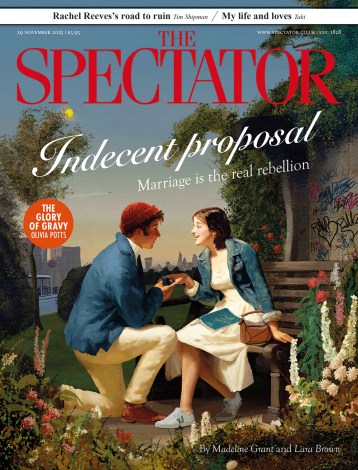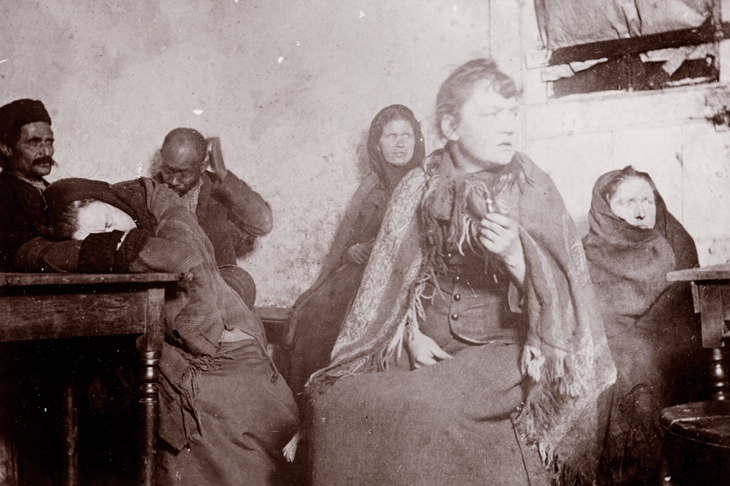All photography requires light, but the light used in flash photography is unique — shocking, intrusive and abrupt. It’s quite unlike the light that comes from the sun, or even from ambient illumination. It explodes, suddenly, into darkness.
The history of flash goes right back to the challenges faced by early photographers who wanted to use their cameras in places where there was insufficient light — indoors, at night, in caves. The first flash photograph was probably a daguerreotype of a fossil, taken in 1839 by burning limelight. For the next 50 years, photographers experimented with limelight, which was familiar from theatre illumination, with portable battery-driven lights — which Nadar used in his well-known photos of the Paris catacombs — and with magnesium. Magnesium was available in pulverised form and blown through a flame, or ignited in lengths of wire, or mixed into various unstable, if brightly explosive compounds.
Then, in 1887, as magnesium extraction suddenly became much cheaper, a composite flash powder was invented by the German chemists Adolf Miethe and Johannes Gaedicke. They called it ‘Blitzlichtpulver’, or ‘lightning light powder’, borrowing associations of awe, grandeur and sublimity from naturally occurring flashes of electrical energy. This powder could be exploded in ‘flash guns’ — some even looked like pistols, adding to the atmosphere of panic that often attended early flash explosions — or ignited on a tray. It was available for do-it-yourself mixing; supplied on impregnated sheets or made into small explosive devices rather like tea bags.
In its early days, a sense of quasi-divine revelation was invoked by some flash photographers, especially when documenting deplorable social conditions. Jacob Riis, for example, working in New York in the late 1880s, used transcendental language to help underscore flash’s significance as an instrument of intervention and purgation. But it’s in relation to documentary photography that we encounter most starkly flash’s singular, and contradictory, aspects. It makes visible that which would otherwise remain in darkness; but it is often associated with unwelcome intrusion, a rupturing of private lives and interiors.
Yet flash brings a form of democracy to the material world. Many details take on unplanned prominence, as we see in the work of those Farm Security Administration photographers who used flash in the 1930s and laid bare the reality of poverty during the Depression. A sudden flare of light reveals each dent on a kitchen utensil and the label on each carefully stored can; each photograph on the mantel; each cherished ornament; each little heap of waste paper or discarded rag; each piece of polished furniture or stained floor or accumulation of dust; each wrinkle. Flash can make plain, bring out of obscurity, the appearance of things that may never before have been seen with such clarity.
These FSA photographers used flash bulbs, not powder. Pioneered in the late 1920s, these bulbs became generally available around 1930, their ease and portability transforming the abilities of press photographers as well as documentarians. Police photographers, too, could now record crimes committed under the cover of darkness. No one more famously brought flash and crime together than the figure of Weegee, recording murders, accidents, arrests: his self-publicity was synonymous with the Speed Graphic camera and his Graflex flash synchronizer — to the extent that he once photo-montaged himself into a flashbulb. This combination also found its way into detective fiction and film, as with George Harmon Coxe’s hard-bitten character ‘Flash Casey, Crime Photographer’.
However, and nothwithstanding its usefulness, flash continues to be disliked, even despised, because of its invasiveness. Nowhere has this been more apparent than in the work of paparazzi. The popping of flash bulbs has become visual shorthand for the achievement of fame, or notoriety. The firing off of a barrage of light may be represented as a terrifying onslaught, as when King Kong, displayed on the New York stage, is startled into destructive rage by news-paper photographers. From the early 1960s onwards, paparazzi flashes have become synonymous with unwelcome exposure.
Flash does not belong just to the world of the professional photographer. The earliest cheap cameras with synchronised flash date from about 1940, and then after the second world war a line stretches from little peanut-sized flash bulbs, to flash cubes, to the electronic flash that is now a commonplace of consumer cameras, and the bright light that can flare out of a mobile phone. These developments overlapped, and there are many variants to be found within flash’s technology. What remains constant is its connection — in advice manuals, in specialist publications, in advertising — to the modern; to, indeed, the flashy. ‘It’s new, it’s now, it’s — Flashcube!’ proclaims a TV commercial from the 1960s, linking it to the dance floor and the sounds of the Swinging Sixties. Until very recent developments in light-sensitive microchip technology, flash — and the red eyes and startled, bleached expressions that go with it — has been almost ubiquitous in everyday photography.
But the history of flash photography is about speed as well as about light. The word ‘flash’ is commonly used in all kinds of contexts to indicate the extremely short, or transitory, or spontaneous — as in ‘flash mobs’ and ‘flash floods’ and ‘flash fiction’. The two connotations — speed and light — converge in high-speed photography. Fox Talbot, in 1851, first patented the use of a spark to capture a moving object on a negative — an experiment allegedly suggested by the way in which a lightning flash at night seems to freeze drops of rain or the water playing in a fountain. Sadly, there’s no visual evidence for this: we have to wait until the work of Arthur Worthington, in the late 19th century, and then, and most notably, the beautiful images produced by the American Harold Edgerton in the mid-20th century. His high-speed images, enabled by very high-speed bursts of light from electrically controlled neon tubes, created the illusion of stopped motion: bullets piercing playing cards or balloons; golfers and tennis players swinging at balls. The ordinary became strange, and beautiful, through stroboscopic flash.
Despite its practical attributes, flash photography often remains an intrusive irritant. But in contemporary photography, flash’s reputation is being remade. This can take the form, say, of Martin Parr’s use of ring flash to heighten colour saturation in his works of affectionately satirical commentary — or it can take on a strong self-referential presence. Cindy Sherman and Viktoria Binschtok have experimented with the sudden glare of paparazzi exposure. Sarah Pickering, in her ‘Celestial Objects’ series, photographs a revolver’s bullet fired in the complete dark. In her use of darkness, flame, blurs of light and the white-hot core of gunpowder’s ignition, she returns flash photography to the unpredictable and thrilling category of the sublime. Likewise, Hiroshi Sugimoto captures electrical discharges that look like streaks of lightning branching off from an incandescent spinal core.
These examples challenge the bad press that flash photography has received over the century and a half since its invention. Certainly, flash has its destructive and damaging associations: think of the illumination of lynched bodies, or the atomic bomb, producing the biggest flash of all. Nonetheless, flash remains a creative as well as a practical tool. Sudden and surprising light continues to be imaginatively deployed by inventive photographers, once again making luminous something of the original wonder that attended flash.






Comments